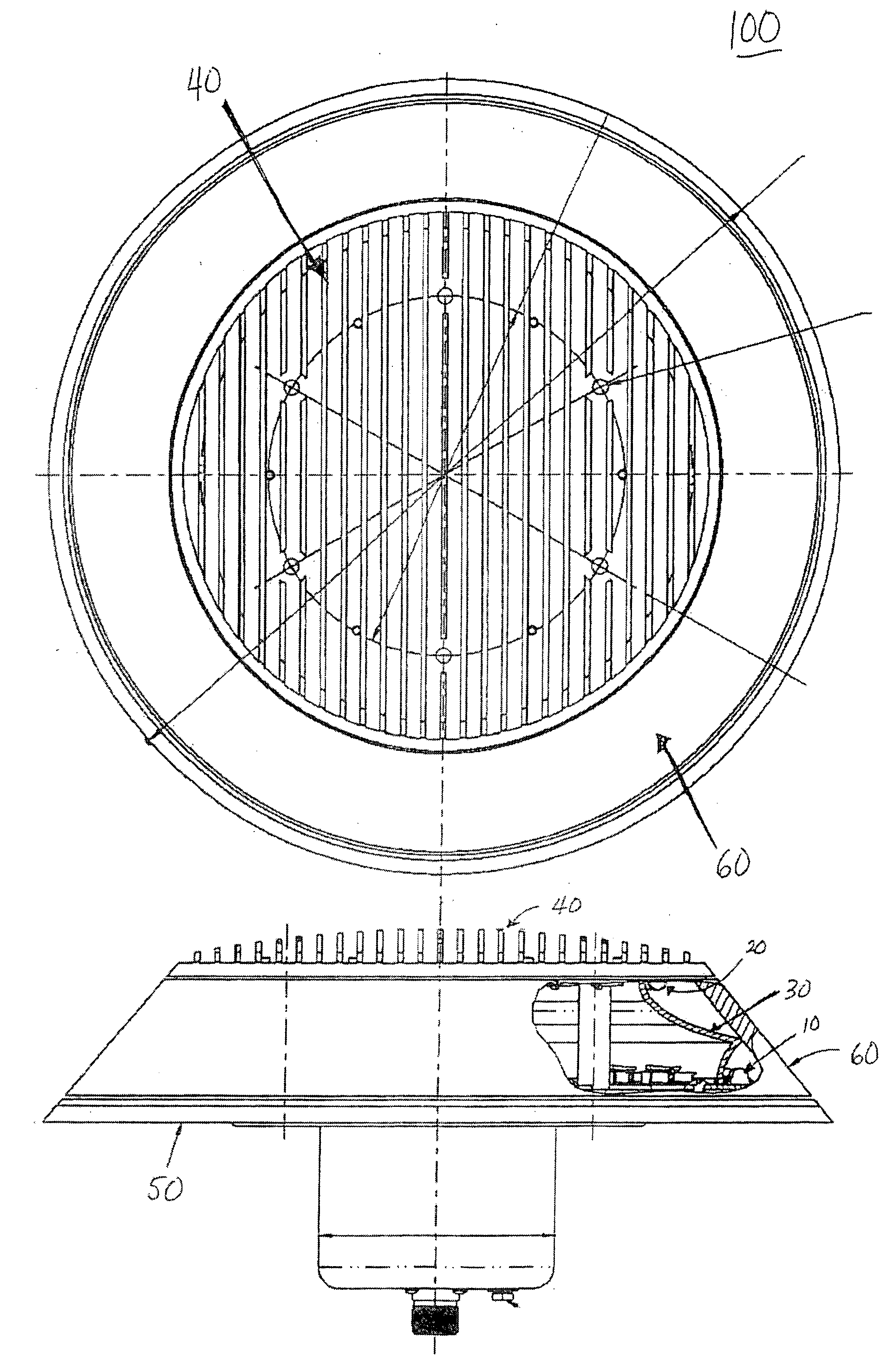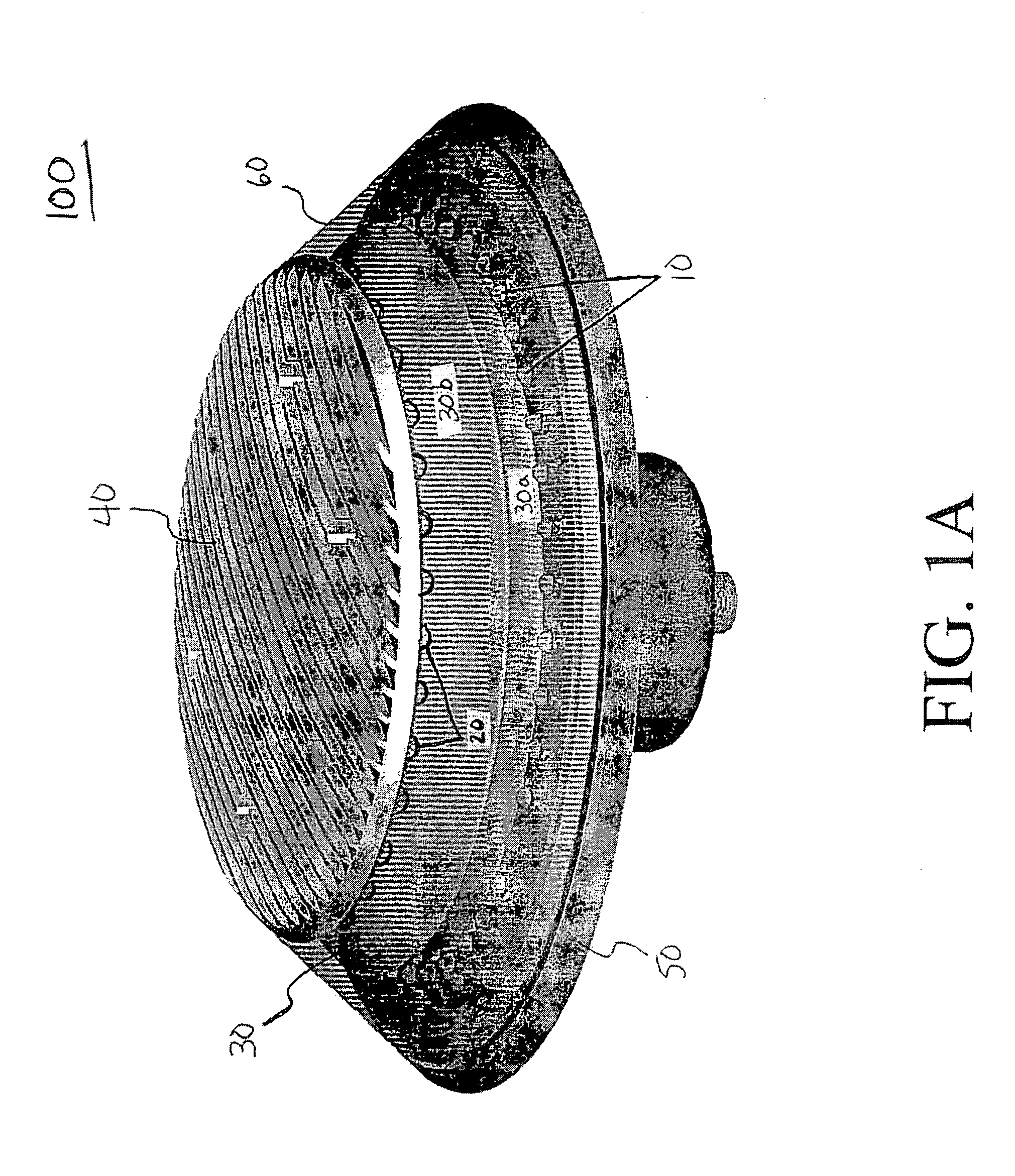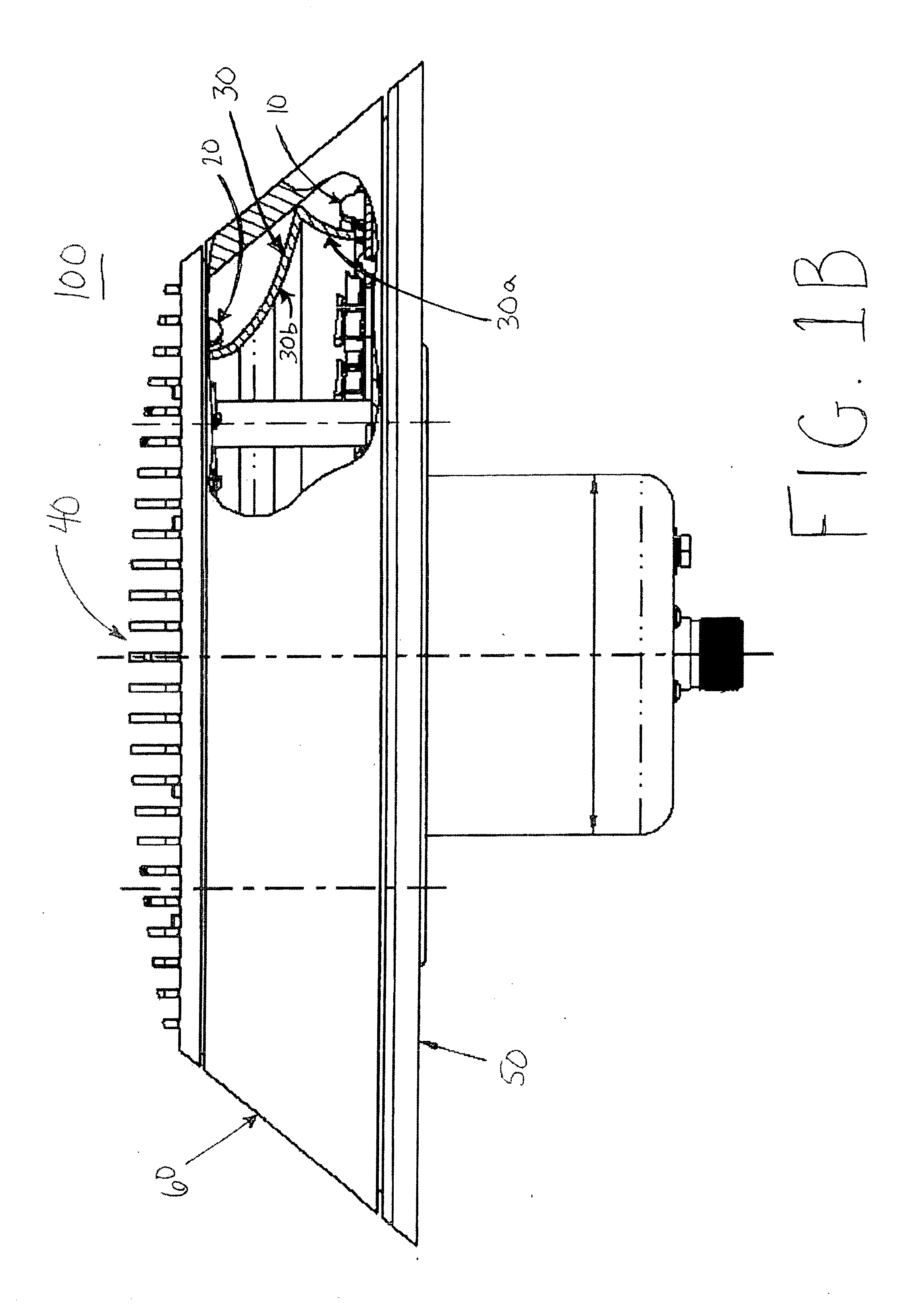Body mounted LED-based anti-collision light for aircraft
an anti-collision light and led-based technology, applied in the field of aircraft anti-collision lights, can solve the problems of red leds experiencing a much higher level of degradation, increasing size, and increasing so as to simplify thermal management, reduce the number of leds, and reduce the cost and power consumption
- Summary
- Abstract
- Description
- Claims
- Application Information
AI Technical Summary
Benefits of technology
Problems solved by technology
Method used
Image
Examples
Embodiment Construction
[0034] Exemplary embodiments of the present invention are described in the following description.
[0035] Given that the photometric requirements of the Federal Aviation Regulations (FARs) for anti-collision lights are rotationally symmetrical, exemplary embodiments of the present invention utilize an optical approach, which is also rotationally symmetrical.
[0036]FIGS. 1A and 1B illustrate a fuselage-mounted anti-collision light, according to an exemplary embodiment of the present invention. In the anti-collision light 100 of this embodiment, a first ring of LEDs 10 are mounted along the perimeter of a base portion 50 (or “base platform”). A second ring of LEDs 20 are inverted and attached to a top portion 40 (“top platform”) of the anti-collision light 100. In an exemplary embodiment, the first and second rings of LEDs 10 and 20 may be substantially arranged in a rotationally symmetric manner (i.e., symmetrical about a vertical axis).
[0037] According to an exemplary embodiment, th...
PUM
 Login to View More
Login to View More Abstract
Description
Claims
Application Information
 Login to View More
Login to View More - R&D
- Intellectual Property
- Life Sciences
- Materials
- Tech Scout
- Unparalleled Data Quality
- Higher Quality Content
- 60% Fewer Hallucinations
Browse by: Latest US Patents, China's latest patents, Technical Efficacy Thesaurus, Application Domain, Technology Topic, Popular Technical Reports.
© 2025 PatSnap. All rights reserved.Legal|Privacy policy|Modern Slavery Act Transparency Statement|Sitemap|About US| Contact US: help@patsnap.com



